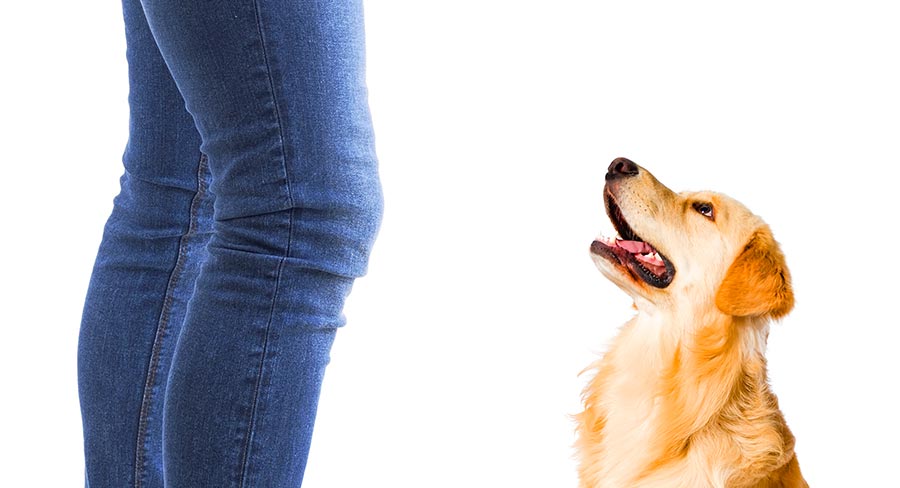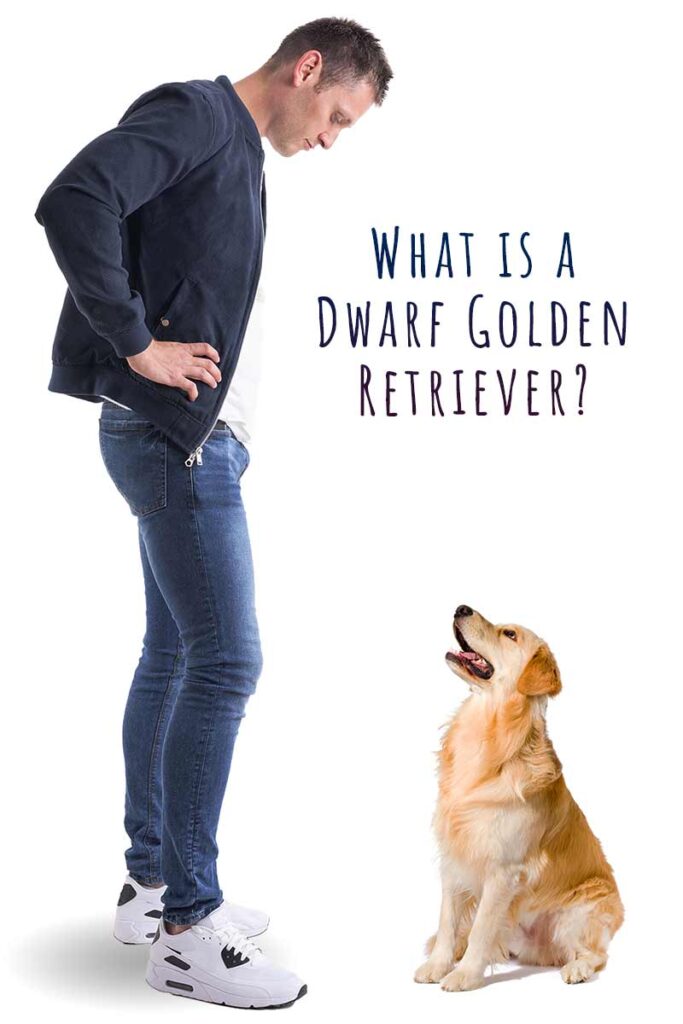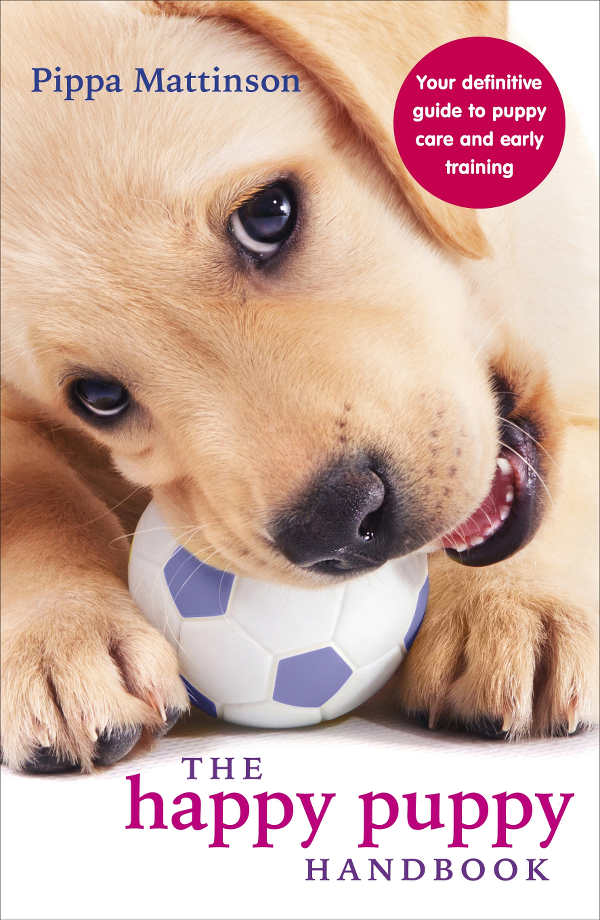
Dwarf Golden Retriever dogs are very rare.
Dwarfism is not a naturally occurring condition in pedigree Goldens, so dwarf Golden Retrievers are hybrid dogs which have been crossed with another breed.
This creates a shorter dog, but it also has implications for their health and temperament.
What is a Dwarf Golden Retriever?
Dwarfism is a hereditary condition which causes dogs to have disproportionately short bones in their legs.
It is distinct from ‘miniaturizing’ dogs by mating small normally-proportioned individuals from the same pedigree together. Or cross breeding with a small, normally-proportioned breed.
There are two main types of dwarfism in dogs: chrondrodysplasia, and chondrodystrophy.
Both types appear very similar, but they are caused by different genetic mutations.

The mutations are present in almost all dogs belonging to dwarf dog breeds, such as Corgis and Dachshunds.
They are also present at a very low frequency in lots of other dog breeds, including Labrador Retrievers.
However, at the time of writing, there’s no evidence at all of them occurring naturally in Golden Retriever lines.
This means Golden Retriever puppies will only be born with dwarfism if a breeder intentionally crosses their Golden with a dog from another breed, to introduce a dwarfism causing genetic mutation.
In other words, there’s no such thing as a dwarf Golden Retriever, but it is possible to create a dwarf Golden Retriever mix.
Dwarf Golden Retriever Mixes
Crossing Golden Retrievers with most dwarf breeds will result in a Golden Retriever mix puppy that also has short legs. Many will also be short hairedtoo, but coat length will depend on the mix.
Chondrodysplasia is a dominant genetic trait, which means puppies only need to inherit the mutation from one parent in order to end up with short legs.
The gene for chondrodystrophy is semi-dominant. Which means dogs with one copy of the gene have legs which are shorter than normal, but how much shorter they are varies between individuals.
To produce dwarf puppies a breeder might cross a Golden with a
- Dachshund
- Pembroke Welsh Corgi
- Cardigan Corgi
- Beagle
- They have a higher prey drive.
- They are more likely to behave aggressively towards strangers, other dogs, and their owners.
- And they tend to be more attention seeking and prone to separation anxiety.
- Short Hair Golden Retriever
- Golden Retriever Dog Breed Guide
But, these crosses can inherit physical and personality traits from both the Golden, and their other parent.
Which means that if it’s the Golden you’re most interested in, there are pros and cons of each.
Dachshund Golden Retriever mix
A yellow, longhaired Dachshund has the most similar coat to a Golden, so in that sense this dwarf Golden Retriever’s appearance is most likely to meet expectations.
But, Dachshund Golden Retriever mix dogs are also the most likely to inherit a painful spinal disease called intervertebral disc disease, which we’ll come back to in a moment.
Dachshund temperament is also very different from Golden temperament.
A mixed breed puppy could inherit any or all of these traits, and not be much like a Golden Retriever at all.
Corgi Golden Retriever mix
Corgi mixes of all types are frequently described as looking like Corgis in fancy dress as the other breed.
But the truth is, this mix could look a lot like a short Golden Retriever, or a lot like, well… a Corgi.
Corgis are devoted and loyal like Goldens, but they may have a strong herding instinct.
And whilst Goldens are popular family pets, some people think Corgis are best suited to families with older kids because they may nip the heels of young children to round them up.
Beagle Golden Retriever mix
Beagle Golden Retriever mixes are sometimes known as a Beago.
Beagles might not necessarily leap to mind when you think of dwarf dogs, but in fact all Beagles have chondrodysplasia.
So a Beago will definitely be shorter than the average Golden Retriever. But they might look more like a Beagle in lots of other ways too.
Beagles tend to share Golden’s friendly, happy go lucky attitude, but they are also be more vocal, and inclined to run after an interesting scent!
Dwarf Labrador Golden Retriever mix
Labradors and Goldens are both traditional retrieving breeds, and their temperaments are very similar.
Furthermore, the genes for dwarfism are already present in the Labrador population, albeit at a very low frequency.
Finding a dwarf yellow Lab to mate to a Golden Retriever would result in puppies which are short, but unmistakable retriever-like in looks and temperament.
The drawback to this is that dwarf Labs do not meet their own breed standard, so they are pretty rare. Which makes this particular mix hard to come by.
Dwarf Golden Retriever Health
Golden Retrievers with dwarfism are predisposed to the same health conditions as full height Goldens.
They are also prone to the problems of their other parent.
And some of these problems are related specifically to having dwarfism, which raises questions about whether introducing dwarfism into Goldens is acceptable in the first place.
Golden Retriever health
Golden Retrievers are prone to several joint diseases. Approximately 1 in 5 have some degree of hip dysplasia, 1 in 10 have elbow dysplasia, and 1 in 30 have problems with their shoulders.
Dogs can, and should, be screened for all of these conditions before they are used for breeding.
About one quarter of Goldens are also carriers for progressive retinal atrophy, which causes blindness. Golden Retrievers used for breeding should be DNA tested for the faulty gene, and if they carry it, should only be mated with dogs that have tested clear of it, to protect their puppies.
Sadly, Goldens also have a higher prevalence of cancer than any other breed.
Golden Retriever mix health
Dwarf Golden Retrievers are also vulnerable to hereditary diseases from their ‘other’ breed.
This throws up too many possibilities to cover them all here, but the Orthopedic Foundation for Animals maintains a free to search database of breed disease statistics, and recommended health tests for breeding dogs.
You can also explore our own breed pages for lots of information about all aspects of owning different dog breeds.
The health implications of dwarfism
Dwarf dogs appeal because a lot of people think they look cute.
If you have a relatively small house or car, they might also seem more practical.
However, it can have repercussions for a dog’s health.
In particular, chondrodystrophy also leads to the painful spinal disease intervertebral disc disease (IVDD).
Intervertebral discs sit between the vertebrae. They allow movement of the spine, and cushion the bones. In dogs with IVDD, the discs begin to degenerate, causing pain and paralysis.
IVDD is very expensive to diagnose and treat, and sadly in some cases, it proves incurable.
IVDD is rare in dwarf dogs with one copy of the chondrodysplasia gene, but almost inevitable for dogs who inherit a copy of the chondrodystrophy gene.
To protect dwarf Golden Retrievers, their dwarf parent can be DNA tested to find out which dwarfism genes they carry.
This is done by a simple cheek swab, and your breeder should have a copy of the results to share with you.
Your Dwarf Golden Retriever
A dwarf Golden Retriever sounds like a cute, compact version of a family favorite.
However, dwarfism can only be introduced to Goldens by crossing them with other dog breeds.
So, a dwarf Golden Retriever might also have physical features and a temperament which more closely resemble that breed too.
One of the most common forms of dwarfism in dogs is chondrodystrophy, which also causes IVDD.
To avoid introducing this painful condition to a Golden Retriever unnecessarily, any dwarf dog used to create dwarf Golden Retrievers should be DNA tested to make sure they don’t carry the chondrodystrophy gene.
Do You Have A Dwarf Golden Retriever?
Tell us about them in the comments box down below!
Readers Also Liked
References
Brown et al. FGF4 retrogene on CFA12 is responsible for chondrodystrophy and intervertebral disc disease in dogs. PNAS. 2017.
Fleming et al. Mortality in North American Dogs from 1984 to 2004: An Investigation into Age-, Size-, and Breed-Related Causes of Death. Journal of Veterinary Internal Medicine. 2011.
Orthopedic Foundation for Animals.
Serpell and Duffy. Dog Breeds and Their Behavior. Domestic Dog Cognition & Behavior. 2014.

Debbie Bird says
My daughter gifted me what was supposed to be a golden doodle but I think i have a dwarf golden retriever instead. He is four months old and adorable but very short legs.
Deirdre Doyle says
Dwarf golden retrievers do occur within purebred litters, even when no familial history is known of the condition. Of course, no responsible breeder would breed them, but I know of two from reputable breeders – one of which was me. Both were males, and had early closure of growth plates in the long bones of the legs, very early, by six months of age. Normally, male golden retrievers growth plates will close by 21 months and sometimes as early as 14 months, although ill-advised early neutering will delay this process and cause the legs to be unnaturally long. Both were otherwise healthy – just very short-legged, with some bowing of the front legs. They both lived into their teens. Neither was ever bred, and neither was ever neutered.
Mia says
I too am a European Golden Retriever breeder and have excellent lines from Hungary, these are DNA tested 100% purebred Goldens. I have a dwarf cream I raised from birth . The vet is the one that confirmed she was actually a dwarf she is 1.5 yrs old and has kidney issues and the vet said reproduction organs were abnormal but fine otherwise.
Cathy says
I have a Golden female that was not crossed with another breed. She has much shorter legs than any of the other dogs from the same litter. I was told
She is a dwarf. In your article is states that they are very rare. Well if she is not a dwarf then I would like
To know what she is and why her legs are so
Much shorter.